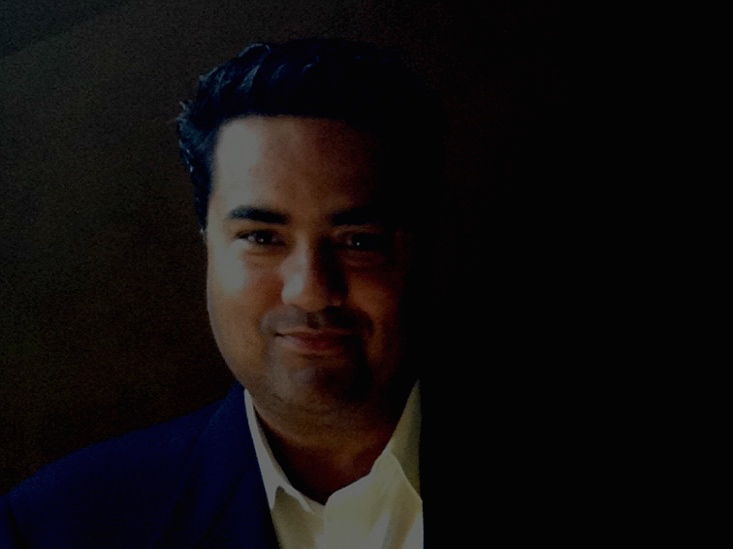Instruction
Dr. Gupta: The Secret To Finding YOUR GAME

Though it is not the modern way, the truth always lies beneath that which is immediately graspable. And it lies further than one’s natural and customary reach.
You struggle to find your game. You have it in practice. You find it on the range. You have it on the practice green.
But you lose it on the course.
Why?
The reasons are varied, but let’s discuss one fundamental possibility. Perhaps one you have not explored. For it deals NOT with tips and tricks, but a dissection of the matter at hand.
Could it be that the game that you are attempting to play in the practice area is NOT the same one you attempt to play on the course?
Could it also be that the game that you are attempting to play on the course is NOT the same one you attempt to play in tournaments?
Could it be that the “goal posts” are being moved without you being aware of it?
I will explain.
How long has it been since you asked yourself why it is that you play? Is it perhaps time to have a SINCERE conversation with yourself about the source of your joy as it relates to golf?
You see, before you can work on your game, you must figure out which game it is that you are attempting to play.
Perhaps in the practice area you are attempting to play golf. You are using a club to advance a ball to a target. You are working on mechanics. You are working on trajectory. And all various manners related to the wholly innocent activity of ball advancement.
But could it be that when you enter a tournament or a match that the game suddenly changes?
Could it be that while you play golf on the practice ground, you play the winning-vs.-losing game in the tournament?
Could it be that while you play golf on the practice ground, you play the don’t-embarrass-yourself game in the tournament?
Could it be that while you play golf on the practice ground, you play the I-must-redeem-myself game in the tournament?
Could it be that while you play golf on the practice ground, you play the I-must-raise-my-Official-World-Golf-Ranking game in the tournament?
Could it be that while you play golf on the practice ground, you play the I-must-keep-my-Tour-card game in the tournament?
At this most delicate juncture in this conversation I will tell you fear not, for I am NOT about to judge you. I am not about to tell you what you should or should not do. This is an epidemic in the world of performance and instruction and it is not my way.
I have no interest in advising you to refrain from playing any of the games above. I simply ask that you discover for yourself, honestly and sincerely and without fear of judgment or reprimand, which game it is that you play.
I will state in a purely clinical and non-judgmental way that if you play any of the games above, or your personal flavor thereof, that you are not playing the game of golf. Once again, I reiterate that I am not asking you to abandon any of those games in exchange for the game of golf.
I am simply stating that if golf is what you practice and golf is what you train for, it is golf that you are improving at. But if in the tournament you are not playing the game of golf, you might as well be playing the game of soccer.
You see, athletes often lose sight of that which is fundamental. And given the culture in which the athlete finds himself, it is completely understandable why he would lose sight of the fundamental.
The fundamental, the secret, is to discover for yourself:
- Which game is it that you are really playing?
- Why is it that you play?
All across the world, from the professionals to the amateurs, the game is no longer a game. The game has not been a game for a very long time.
The game has become simply a vehicle. A vehicle for gain. A vehicle for conquest. A vehicle to fill the emptiness a man feels. A vehicle for man to settle the scores of his unrequited dreams.
The game has been a clothes line upon which man has begun to hang his dirty laundry.
And, as such, the game is no longer the game it was intended to be.
Perhaps if you were willing to return to the game that first attracted you to it, you could play it beautifully once again.
Perhaps if you rediscovered the fact that the game is meant only to be played and not to be used, you could play it with aplomb.
Perhaps if you returned to the game in its wholly virgin form you would discover that all the demons that have frightened you belonged to all the other games you brought with you, and not the one spawned their existence.
Perhaps…
Instruction
The Wedge Guy: Beating the yips into submission

There may be no more painful affliction in golf than the “yips” – those uncontrollable and maddening little nervous twitches that prevent you from making a decent stroke on short putts. If you’ve never had them, consider yourself very fortunate (or possibly just very young). But I can assure you that when your most treacherous and feared golf shot is not the 195 yard approach over water with a quartering headwind…not the extra tight fairway with water left and sand right…not the soft bunker shot to a downhill pin with water on the other side…No, when your most feared shot is the remaining 2- 4-foot putt after hitting a great approach, recovery or lag putt, it makes the game almost painful.
And I’ve been fighting the yips (again) for a while now. It’s a recurring nightmare that has haunted me most of my adult life. I even had the yips when I was in my 20s, but I’ve beat them into submission off and on most of my adult life. But just recently, that nasty virus came to life once again. My lag putting has been very good, but when I get over one of those “you should make this” length putts, the entire nervous system seems to go haywire. I make great practice strokes, and then the most pitiful short-stroke or jab at the ball you can imagine. Sheesh.
But I’m a traditionalist, and do not look toward the long putter, belly putter, cross-hand, claw or other variation as the solution. My approach is to beat those damn yips into submission some other way. Here’s what I’m doing that is working pretty well, and I offer it to all of you who might have a similar affliction on the greens.
When you are over a short putt, forget the practice strokes…you want your natural eye-hand coordination to be unhindered by mechanics. Address your putt and take a good look at the hole, and back to the putter to ensure good alignment. Lighten your right hand grip on the putter and make sure that only the fingertips are in contact with the grip, to prevent you from getting to tight.
Then, take a long, long look at the hole to fill your entire mind and senses with the target. When you bring your head/eyes back to the ball, try to make a smooth, immediate move right into your backstroke — not even a second pause — and then let your hands and putter track right back together right back to where you were looking — the HOLE! Seeing the putter make contact with the ball, preferably even the forward edge of the ball – the side near the hole.
For me, this is working, but I am asking all of you to chime in with your own “home remedies” for the most aggravating and senseless of all golf maladies. It never hurts to have more to fall back on!
Instruction
Looking for a good golf instructor? Use this checklist

Over the last couple of decades, golf has become much more science-based. We measure swing speed, smash factor, angle of attack, strokes gained, and many other metrics that can really help golfers improve. But I often wonder if the advancement of golf’s “hard” sciences comes at the expense of the “soft” sciences.
Take, for example, golf instruction. Good golf instruction requires understanding swing mechanics and ball flight. But let’s take that as a given for PGA instructors. The other factors that make an instructor effective can be evaluated by social science, rather than launch monitors.
If you are a recreational golfer looking for a golf instructor, here are my top three points to consider.
1. Cultural mindset
What is “cultural mindset? To social scientists, it means whether a culture of genius or a culture of learning exists. In a golf instruction context, that may mean whether the teacher communicates a message that golf ability is something innate (you either have it or you don’t), or whether golf ability is something that can be learned. You want the latter!
It may sound obvious to suggest that you find a golf instructor who thinks you can improve, but my research suggests that it isn’t a given. In a large sample study of golf instructors, I found that when it came to recreational golfers, there was a wide range of belief systems. Some instructors strongly believed recreational golfers could improve through lessons. while others strongly believed they could not. And those beliefs manifested in the instructor’s feedback given to a student and the culture created for players.
2. Coping and self-modeling can beat role-modeling
Swing analysis technology is often preloaded with swings of PGA and LPGA Tour players. The swings of elite players are intended to be used for comparative purposes with golfers taking lessons. What social science tells us is that for novice and non-expert golfers, comparing swings to tour professionals can have the opposite effect of that intended. If you fit into the novice or non-expert category of golfer, you will learn more and be more motivated to change if you see yourself making a ‘better’ swing (self-modeling) or seeing your swing compared to a similar other (a coping model). Stay away from instructors who want to compare your swing with that of a tour player.
3. Learning theory basics
It is not a sexy selling point, but learning is a process, and that process is incremental – particularly for recreational adult players. Social science helps us understand this element of golf instruction. A good instructor will take learning slowly. He or she will give you just about enough information that challenges you, but is still manageable. The artful instructor will take time to decide what that one or two learning points are before jumping in to make full-scale swing changes. If the instructor moves too fast, you will probably leave the lesson with an arm’s length of swing thoughts and not really know which to focus on.
As an instructor, I develop a priority list of changes I want to make in a player’s technique. We then patiently and gradually work through that list. Beware of instructors who give you more than you can chew.
So if you are in the market for golf instruction, I encourage you to look beyond the X’s and O’s to find the right match!
Instruction
What Lottie Woad’s stunning debut win teaches every golfer

Most pros take months, even years, to win their first tournament. Lottie Woad needed exactly four days.
The 21-year-old from Surrey shot 21-under 267 at Dundonald Links to win the ISPS Handa Women’s Scottish Open by three shots — in her very first event as a professional. She’s only the third player in LPGA history to accomplish this feat, joining Rose Zhang (2023) and Beverly Hanson (1951).
But here’s what caught my attention as a coach: Woad didn’t win through miraculous putting or bombing 300-yard drives. She won through relentless precision and unshakeable composure. After watching her performance unfold, I’m convinced every golfer — from weekend warriors to scratch players — can steal pages from her playbook.
Precision Beats Power (And It’s Not Even Close)
Forget the driving contests. Woad proved that finding greens matters more than finding distance.
What Woad did:
• Hit it straight, hit it solid, give yourself chances
• Aimed for the fat parts of greens instead of chasing pins
• Let her putting do the talking after hitting safe targets
• As she said, “Everyone was chasing me today, and managed to maintain the lead and played really nicely down the stretch and hit a lot of good shots”
Why most golfers mess this up:
• They see a pin tucked behind a bunker and grab one more club to “go right at it”
• Distance becomes more important than accuracy
• They try to be heroic instead of smart
ACTION ITEM: For your next 10 rounds, aim for the center of every green regardless of pin position. Track your greens in regulation and watch your scores drop before your swing changes.
The Putter That Stayed Cool Under Fire
Woad started the final round two shots clear and immediately applied pressure with birdies at the 2nd and 3rd holes. When South Korea’s Hyo Joo Kim mounted a charge and reached 20-under with a birdie at the 14th, Woad didn’t panic.
How she responded to pressure:
• Fired back with consecutive birdies at the 13th and 14th
• Watched Kim stumble with back-to-back bogeys
• Capped it with her fifth birdie of the day at the par-5 18th
• Stayed patient when others pressed, pressed when others cracked
What amateurs do wrong:
• Get conservative when they should be aggressive
• Try to force magic when steady play would win
• Panic when someone else makes a move
ACTION ITEM: Practice your 3-6 foot putts for 15 minutes after every range session. Woad’s putting wasn’t spectacular—it was reliable. Make the putts you should make.
Course Management 101: Play Your Game, Not the Course’s Game
Woad admitted she couldn’t see many scoreboards during the final round, but it didn’t matter. She stuck to her game plan regardless of what others were doing.
Her mental approach:
• Focused on her process, not the competition
• Drew on past pressure situations (Augusta National Women’s Amateur win)
• As she said, “That was the biggest tournament I played in at the time and was kind of my big win. So definitely felt the pressure of it more there, and I felt like all those experiences helped me with this”
Her physical execution:
• 270-yard drives (nothing flashy)
• Methodical iron play
• Steady putting
• Everything effective, nothing spectacular
ACTION ITEM: Create a yardage book for your home course. Know your distances to every pin, every hazard, every landing area. Stick to your plan no matter what your playing partners are doing.
Mental Toughness Isn’t Born, It’s Built
The most impressive part of Woad’s win? She genuinely didn’t expect it: “I definitely wasn’t expecting to win my first event as a pro, but I knew I was playing well, and I was hoping to contend.”
Her winning mindset:
• Didn’t put winning pressure on herself
• Focused on playing well and contending
• Made winning a byproduct of a good process
• Built confidence through recent experiences:
- Won the Women’s Irish Open as an amateur
- Missed a playoff by one shot at the Evian Championship
- Each experience prepared her for the next
What this means for you:
• Stop trying to shoot career rounds every time you tee up
• Focus on executing your pre-shot routine
• Commit to every shot
• Stay present in the moment
ACTION ITEM: Before each round, set process goals instead of score goals. Example: “I will take three practice swings before every shot” or “I will pick a specific target for every shot.” Let your score be the result, not the focus.
The Real Lesson
Woad collected $300,000 for her first professional victory, but the real prize was proving that fundamentals still work at golf’s highest level. She didn’t reinvent the game — she simply executed the basics better than everyone else that week.
The fundamentals that won:
• Hit more fairways
• Find more greens
• Make the putts you should make
• Stay patient under pressure
That’s something every golfer can do, regardless of handicap. Lottie Woad just showed us it’s still the winning formula.
FINAL ACTION ITEM: Pick one of the four action items above and commit to it for the next month. Master one fundamental before moving to the next. That’s how champions are built.
PGA Professional Brendon Elliott is an award-winning coach and golf writer. You can check out his writing work and learn more about him by visiting BEAGOLFER.golf and OneMoreRollGolf.com. Also, check out “The Starter” on RG.org each Monday.
Editor’s note: Brendon shares his nearly 30 years of experience in the game with GolfWRX readers through his ongoing tip series. He looks forward to providing valuable insights and advice to help golfers improve their game. Stay tuned for more Tips!



















snowman
Jan 26, 2015 at 3:01 pm
Good stuff to ponder. Many of us play to challenge ourselves to score as well as we can and we sabotage ourselves with tension when trying too hard. I suggest everyone that plays should seek to play without / minimize tension… Everyone I play with, especially me, has more game than they can deliver when they are under stress (self-imposed) or otherwise. Tension will reveal/exacerbate your weaknesses/flaws in your game. For “serious” golfers, it seems almost unnatural to play with a carefree attitude but it’s worthwhile to “try easy” to do so.
Jafar
Jan 26, 2015 at 11:20 am
This asks a good question to help clear your mind before a round or before a shot even.
J
Jan 25, 2015 at 12:37 pm
Golf is mentally tough. Thanks for the update. Your articles are essentially the same drivel repeated over and over. It’s starting to sound pretentious.
Knobbywood
Jan 25, 2015 at 4:12 pm
If your reading comprehension is so bad that all you got out of that article was “golf is mentally tough” you sir, should refrain from commenting not only on this site but any situation that requires your input or opinion on anything written. The world would have far less useless drivel floating around if you and people like you had more self restraint. Thanks!
J
Jan 26, 2015 at 4:00 pm
And you sir should stick to the topic. Plain and simple. Your opinion has no greater value than mine and simply because you disagree doesn’t make you in any way, shape, or form more intelligent or enlightened. As a matter of fact, those who choose to assign an intellectual value to a subject solely governed by opinions is in fact showing his or her own lack of critical thinking and intelligence. You should refrain from engaging in conversations with people in general if your only ability to do so is to personally insult someone whom you have no personal experience with. You made yourself look like a moron. I may have made myself look overly critical and perhaps harsh, but I believe the truth should be spoken with as few words as possible. It makes for better understanding. Now run along, you’ve overstepped your abilities junior.
Andy
Jan 27, 2015 at 6:15 pm
You two would probably hit it off over a beer if you didn’t know each other, so let’s leave the negativity aside and contribute to the discussion. I forgive you both.
charles lee
Jan 25, 2015 at 3:43 am
great article!! really makes you think differently and question yourself therefore discovering new things about your self or old stuff about yourself.
Ken
Jan 24, 2015 at 9:57 pm
Huh?
B
Jan 24, 2015 at 1:44 pm
I have found that I play my best when I start out playing the course but soon change my focus to try to catch someone, or overtake someone, or to word it another way – I try to take something (a position) away from someone…as-in coming from behind to take away their position. It’s a feeling of me starting out getting the feel for the course (like a the race track), and then it changes over to me being the hunter and all others ahead of me with a better score/position (imaginary or not) are my prey. If I’m in the lead I imagine that there are [still] others I must overtake.
other paul
Jan 24, 2015 at 11:34 am
Better then your first article. You try to sound to spiritual when you talk.
I think it is the fear of failure and embarrassment that makes us play different all the time. I play my best alone. Personal best with friends is 86, personal best alone is 78.
Knobbywood
Jan 24, 2015 at 4:38 pm
Trying to sound spiritual? Lol come on buddy that’s reaching a little… I feel bad for your spiritual life if this is “sounding spiritual”. He simply has a different stlye that the other writers…Anyway I think this article is a complete breath of fresh air and I loved it, keep it up.
Kapil Gupta MD
Jan 26, 2015 at 10:31 am
Thank you for the kind words, friend. Continued success to you . . .